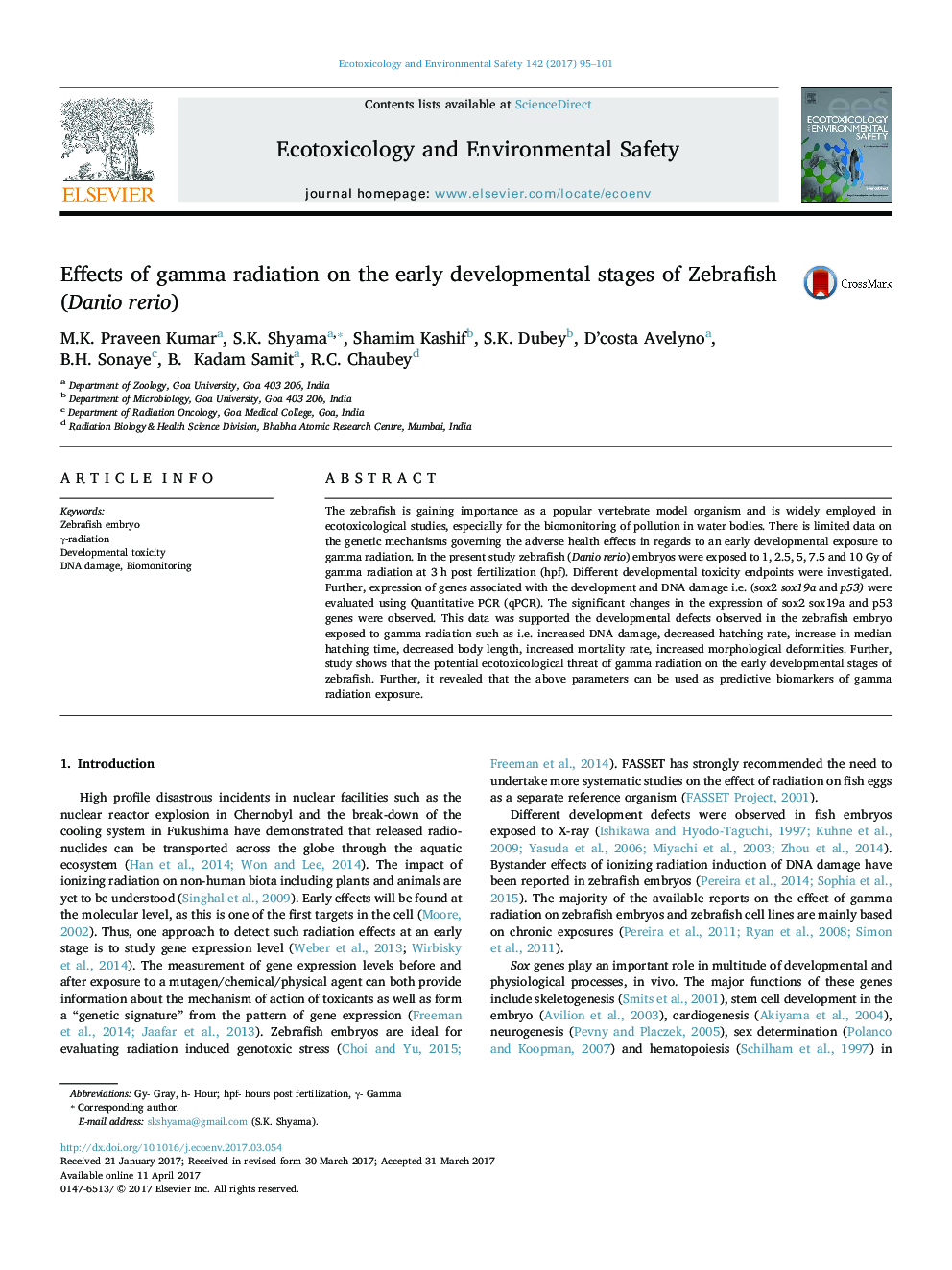| Article ID | Journal | Published Year | Pages | File Type |
|---|---|---|---|---|
| 5747598 | Ecotoxicology and Environmental Safety | 2017 | 7 Pages |
â¢Exposure to gamma radiation elicited developmental impairment on zebrafish embryo.â¢Positive correlation was noted between DNA damage and morphological abnormalities.â¢Down regulation of sox gene is a mechanism for developmental defects.
The zebrafish is gaining importance as a popular vertebrate model organism and is widely employed in ecotoxicological studies, especially for the biomonitoring of pollution in water bodies. There is limited data on the genetic mechanisms governing the adverse health effects in regards to an early developmental exposure to gamma radiation. In the present study zebrafish (Danio rerio) embryos were exposed to 1, 2.5, 5, 7.5 and 10Â Gy of gamma radiation at 3Â h post fertilization (hpf). Different developmental toxicity endpoints were investigated. Further, expression of genes associated with the development and DNA damage i.e. (sox2 sox19a and p53) were evaluated using Quantitative PCR (qPCR). The significant changes in the expression of sox2 sox19a and p53 genes were observed. This data was supported the developmental defects observed in the zebrafish embryo exposed to gamma radiation such as i.e. increased DNA damage, decreased hatching rate, increase in median hatching time, decreased body length, increased mortality rate, increased morphological deformities. Further, study shows that the potential ecotoxicological threat of gamma radiation on the early developmental stages of zebrafish. Further, it revealed that the above parameters can be used as predictive biomarkers of gamma radiation exposure.
